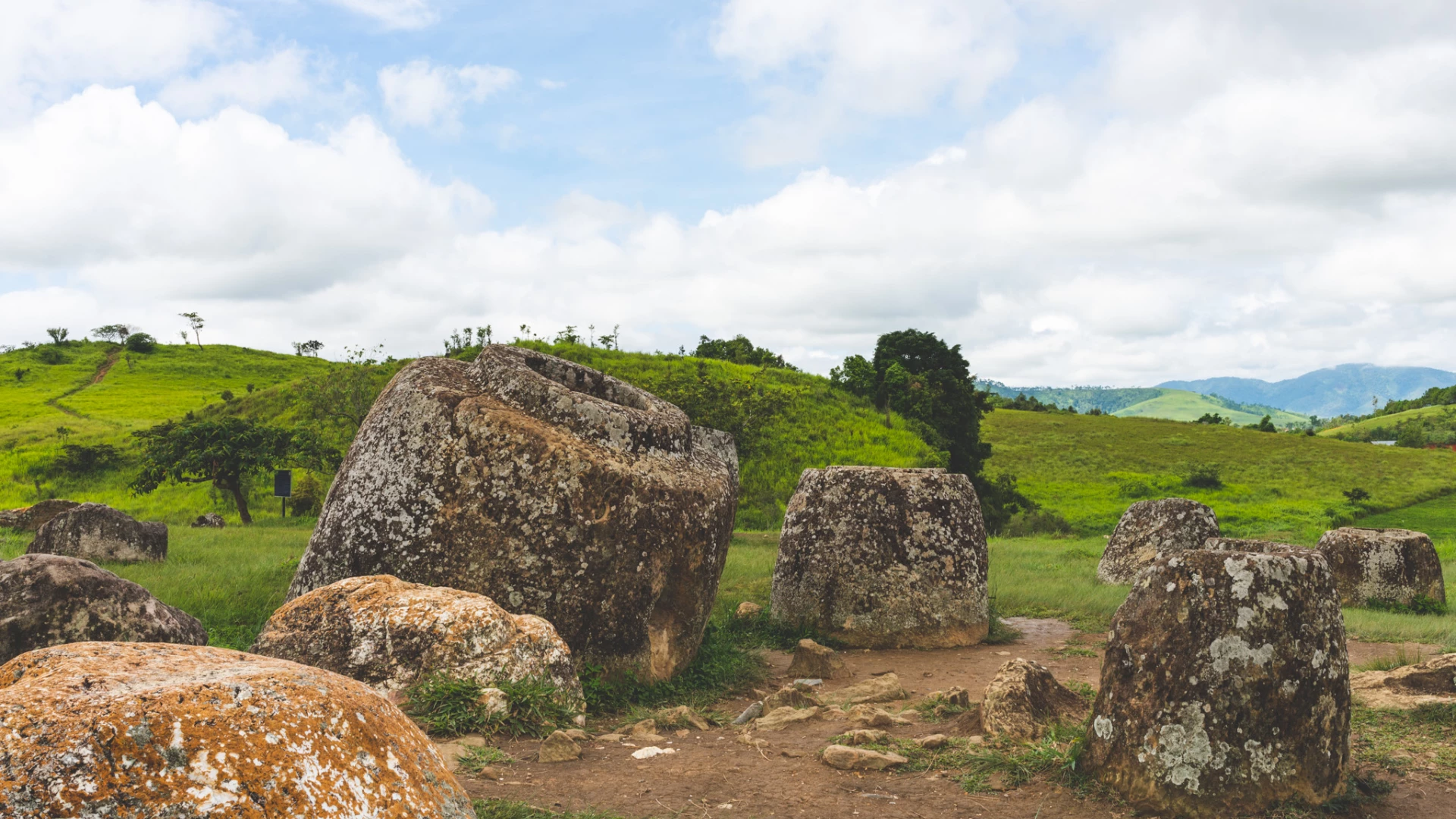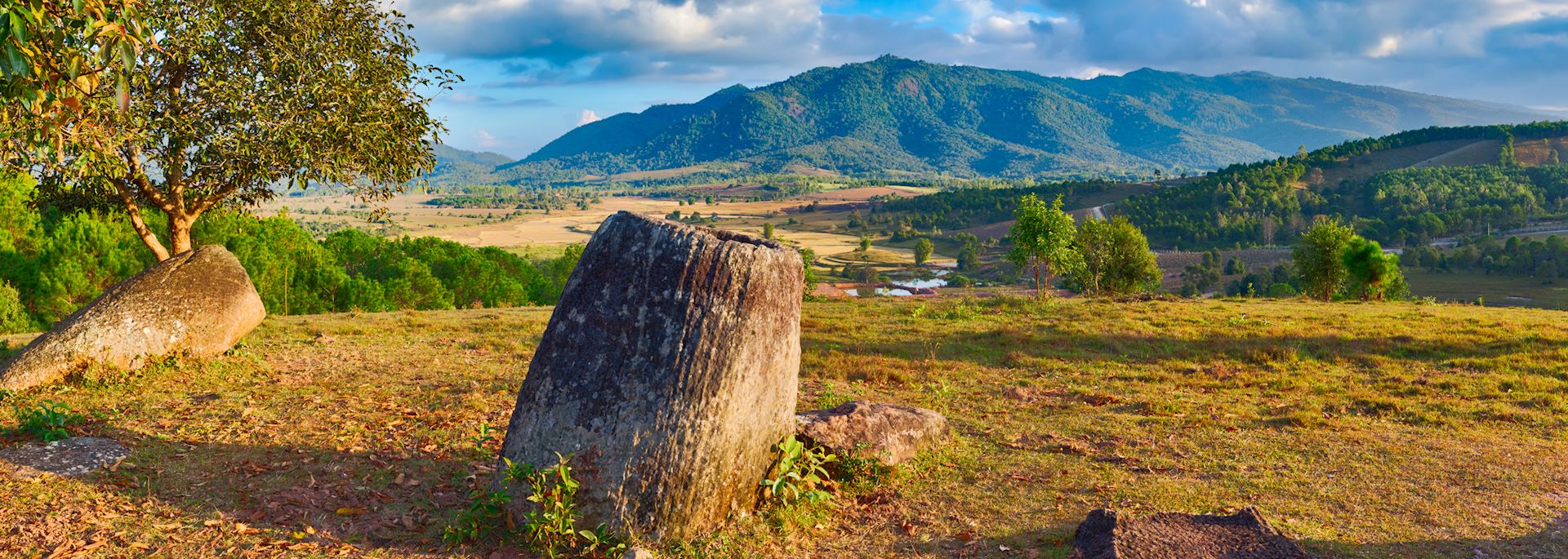



The Plain of Jars is a megalithic archaeological landscape in Laos. It consists of thousands of stone jars scattered around the upland valleys and the lower foothills of the central plain of the Xiangkhoang Plateau. The jars are arranged in clusters ranging in number from one to several hundred. Wikipedia
November to February (Cool & Dry Season): Best weather — sunny days, cool temperatures (15–25°C), and ideal for hiking and exploring.
March to May (Hot Season): Dry but can be hot and dusty.
June to October (Rainy Season): Lush landscapes, but rural roads may be muddy or washed out — travel with caution.
Nearest town: Phonsavan (capital of Xieng Khouang Province).
From Luang Prabang:
By bus/minivan: 7–10 hours, through scenic but winding mountain roads.
By plane: Occasional domestic flights (availability varies).
From Vientiane:
~10–12 hours by road or 1-hour flight (when operating).
Once in Phonsavan, sites are accessed by car, tuk-tuk, or motorbike.
Plain of Jars Site 1 (Ban Ang): The largest and most accessible site, with over 300 jars.
Site 2 (Hai Hin Phu Salato): More spread out, shaded by trees, great views.
Site 3 (Hai Hin Lat Khai): Jars scattered through rice paddies, reachable by short hike.
Mines Advisory Group (MAG) Center: Learn about UXO (unexploded ordnance) clearance efforts.
Mulberry Silk Farm & War Memorials: Insight into local culture and the region’s tragic wartime history.
Explore multiple jar sites and hike between them.
Learn about the area's history — especially the mystery of the jars’ origins (believed to be funerary urns or part of prehistoric rituals).
Visit local villages and interact with Hmong and Khmu ethnic groups.
Take a guided tour for context on the jars and the U.S. “Secret War” bombing campaign.
Watch traditional silk weaving and shop for handmade scarves and textiles.
In Phonsavan (main base):
Budget guesthouses: Clean and simple, often family-run.
Mid-range hotels: Offer Wi-Fi, restaurants, and English-speaking staff.
Eco-lodges: Located just outside town with countryside views.
Local specialties:
Or lam (Lao stew)
Grilled meats and sticky rice
Fresh produce from nearby farms
Restaurants in Phonsavan:
Offer both Lao and international dishes — noodle soups, BBQ, fried rice, sandwiches, and coffee.
Vegetarian options are available at many cafés.
Home to ethnic groups like the Hmong, Khmu, and Tai Dam — known for vibrant clothing, farming traditions, and handicrafts.
Region heavily impacted by the U.S. bombing during the Vietnam War; locals are resilient and deeply connected to the land.
The jars are sacred to locals — avoid climbing on or damaging them.
Respectful dress and behavior are appreciated, especially in villages and temples.